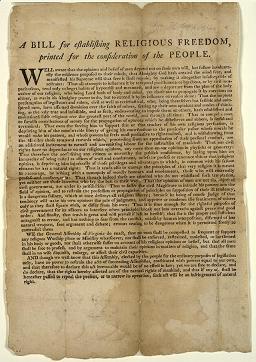BLOG, or DIE. Author Bio
Sunday, 30 May 2010
July/August PAR
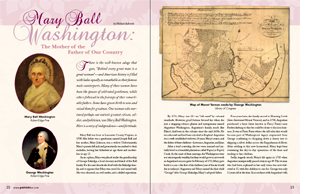 The good folks at Patriots of the American Revolution were kind enough to send me a sneak peek at my Mary Ball Washington feature that is running in the upcoming July/August issue. They had to cut some to fit, but it still turned out pretty good. I will post the entire copy and a PDF of the printed article once it hits the store shelves. I absolutely love writing for this magazine as they seem to bring out my best work. Be sure to grab a copy.
The good folks at Patriots of the American Revolution were kind enough to send me a sneak peek at my Mary Ball Washington feature that is running in the upcoming July/August issue. They had to cut some to fit, but it still turned out pretty good. I will post the entire copy and a PDF of the printed article once it hits the store shelves. I absolutely love writing for this magazine as they seem to bring out my best work. Be sure to grab a copy.
Wednesday, 26 May 2010
Preparing to prepare
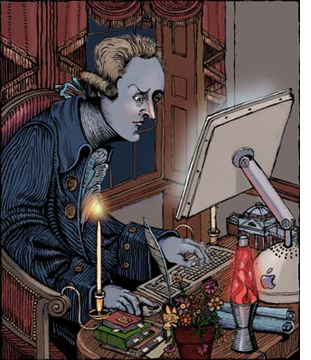 Yesterday I received an email from Ms. Anna Berkes, who is the research librarian at the Jefferson Library. According to her bio on the library’s blog she “Answers reference questions, buys books, and trawls through professional literature.” She has already provided a tremendous service by identifying reference materials for my new book project Faith and Freedom in Fredericksburg: Thomas Jefferson and the Virginia Statute of Religious Freedom (Copyright 2010).
Yesterday I received an email from Ms. Anna Berkes, who is the research librarian at the Jefferson Library. According to her bio on the library’s blog she “Answers reference questions, buys books, and trawls through professional literature.” She has already provided a tremendous service by identifying reference materials for my new book project Faith and Freedom in Fredericksburg: Thomas Jefferson and the Virginia Statute of Religious Freedom (Copyright 2010).
A few weeks ago I contacted the good folks at the TJ Foundation to inquire about obtaining primary sources. Ms. Berkes graciously offered to assist and provided me with a list of essentials. Thanks to her invitation, I will be traveling to Charlottesville over the summer to browse their archives and study documents from their collection. They also have the largest catalog of secondary sources on Thomas Jefferson in the country. As Monticello is my “Disneyland” you can only imagine what a thrill this is.
By Anna’s recommendation we were able to identify a number of recordings on Jefferson’s time here in Fredericksburg (specifically in 1777) including Jefferson's Memorandum Books: Accounts, with Legal Records and Miscellany, 1767-1826, as well as misc. selections from the Papers of Thomas Jefferson. The Thomas Jefferson Encyclopedia that is available online via the Monticello website is also a great source of information.
Locally, I am blessed to have the assistance of Barbara Willis, Jeffrey Edmunds and Nancy Moore at the Central Rappahannock Regional Library and fellow historians Marian McCabe and "Skip" Nolan. They have already provided me with copies of newspapers and articles from publications like The Freedom Record and the Thomas Jefferson Institute Quarterly and are obtaining more references for me from the University of Mary Washington and the College of William and Mary.
Every January there is a multi-denominational observance here in Fredericksburg recognizing the Statute. It is held on Washington Ave where a modest monument to Jefferson’s act stands. Apparently the sponsor of this celebration is a Masonic organization called the Sojourners. I am hoping to get in touch with them as well.
With this many people guiding me, I can’t possibly go wrong.
My greatest pleasure as a historian has always been found in the research process. Writing and editing is simply the conclusion to the journey. I have even lectured on historical research and writing to groups like the Kappa Delta Gamma Sorority (Beta Eta Chapter) and the Pittsburgh Writer’s Group (Read Transcript).
I admit that research can be boring, and painful, and frustrating at times, but there is nothing more gratifying than digging through a dusty archive and uncovering something that hasn’t seen the light of day in years. To quote Carl Sagan “Somewhere, something incredible is waiting to be known.”
By focusing on this aspect, the scholarly phase of historical study, it has enabled me to grow both personally and professionally. In fact, if you read my first few books, versus my last two, you will note a significant difference in what I write about - and how I write it. Frankly, I have matured.
I can hardly wait to get started and to think that I will be in the presence of papers that were penned by Jefferson’s own hand (under the supervision of staff of course) will make this process that much more memorable. I have extensive experience examining relics and historical documents, but to see Jefferson’s personal correspondence in person would be something very special.
I’ve outlined a general framework for the manuscript and casually time-lined a schedule that would have me ready for submission to the publisher sometime in mid-late 2012. It may take longer. As I stated in my announcement, this book will be the most challenging, ambitious, and scholarly work of mine to date.
I am in no hurry as this will be my 7th, and perhaps final title. With the exception of penning the occasional article for Patriots of the American Revolution or The Free Lance-Star (…and blog posts of course), my sole writing focus will be on this project. Stay tuned as I hope to share plenty of insights and updates along the way.
PS. Read the formal announcement on this upcoming title.
ABOVE: Artwork by Robert Meganck titled Thomas Jefferson’s Favorite Web Sites.

Sunday, 23 May 2010
Honoring a Hero
As you may have guessed from the sudden decline in posts, I have been quite busy over the last two weeks trying to complete my to-do list in anticipation of researching materials for my next book on Thomas Jefferson and the Virginia Statute of Religious Freedom (details here). Last week I did an interview for my hometown’s newspaper The Pittsburgh Post-Gazette, and completed my 40-minute banquet address on Jackson’s 1862 Shenandoah Valley Campaign that I will be delivering in Lexington next month. That talk will also be video-taped and posted online on my Vimeo page. I am also busy re-writing some last minute voice-over narration and preparing for the test-screening of our documentary on Richard Kirkland. As I stated in a recent post, no matter how much I focus my energies on the Revolution, I just can’t seem to get away from the Civil War. Yesterday my first in a series of local ancestor-articles ran in The Free Lance-Star. Enjoy:
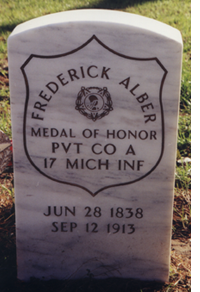 Honoring a Medal of Honor Winner
Honoring a Medal of Honor Winner
Spotsylvania veteran unseen, but not forgotten.
(By Michael Aubrecht, FLS, 5/22/2010. VIEW PDF)
Considered to be the most prestigious decoration bestowed upon members of America's armed forces, the Congressional Medal of Honor is given to those soldiers who distinguish themselves, "above and beyond the call of duty while engaged in an action against an enemy of the United States."
Initially christened the U.S. Army Medal of Honor, this citation was first authorized by a joint resolution of Congress on July 12, 1862 in the midst of the War Between the States. As a result 1,522 military men who participated in that conflict received them. To date, 3,447 men and one woman have been awarded the medal, many posthumously.
One recipient with ties to the local area was Private Frederick Alber, who was awarded his Medal of Honor for valor in action. Alber was a German immigrant and member of Company A of the 17th Michigan Volunteer Infantry. He was recognized for saving an officer on May 12, 1864 during the Battle of Spotsylvania.
His citation reads: "Bravely rescued Lt. Charles H. Todd of his regiment who had been captured by a party of Confederates by shooting down one, knocking over another with the butt of his musket, and taking them both prisoners."
The life and legacy of Frederick Alber is a rather remarkable one. Despite being heavily examined by historical societies and re-enactment groups, no photograph of the man has yet been discovered. This dilemma is quite common when researching soldiers who were killed in action during the Civil War, as photography was just coming into vogue, but Alber lived until September 12, 1913.
His moment of gallantry came during one of the most grueling engagements of the Civil War. Immediately following the bloody stalemate at The Wilderness, the Battle of Spotsylvania erupted and lasted from May 8th through May 21st of 1864. This desperate and ferocious encounter, at sites with names like "The Bloody Angle," resulted in more than 30,000 casualties.
Also referred to as "Spotsylvania Courthouse," this battle is considered to be part of General Ulysses S. Grant's Overland Campaign and pitted the brash commander's Army of the Potomac against General Robert E. Lee's Army of Northern Virginia. Lee's troops had been tremendously successful in defending the Old Dominion in previous years, but were terribly lacking in supplies and starting to show their diminishing numbers.
It seems fitting that Frederick Alber became a soldier, as he had to protect his own family at a very early age. After his parents emigrated from Germany to the United States in 1847, they settled on a farm in Lodi Township in Michigan. The Albers appeared to be living out the "American Dream" when, in July of 1849, the family was dealt a terrible blow. Both of Frederick's parents and a brother contracted cholera and died shortly thereafter. As a result, he was left with the responsibility of caring for his brother and sister. They remained on the family farm and worked the land as their father had intended.
Frederick Alber was 24 years old when he enlisted in the 17th Michigan Infantry on July 2, 1862, and went off to fight for the Union. His regiment participated in at least nine major engagements including the battles of Antietam, Fredericksburg, Vicksburg, Cold Harbor and Petersburg.
The 17th Volunteers earned the tenacious nickname of the "Stonewall Regiment" following their inaugural fight on South Mountain. Not to be confused with their adversary's equally regarded "Stonewall Brigade," which was commanded by General Thomas J. Jackson, the Federal "Stonewallers" boasted eight Medal of Honor recipients.
In rescuing his superior at Spotsylvania, Alber stood out in the minds of those who had witnessed his courage. The story of his bravery circulated and on February 21, 1865, Major General John G. Parke formally recommended him for the Medal of Honor.
He wrote, "In addition to his undaunted bravery, exhibited in the Wilderness rescued, at Spottsylvania, May 12 (1864), Liet. (Charles) Todd, of the 17th, who was in the hands of a party of rebels, shooting down one, knocking over another with the butt of his musket and taking the captors of Lieut. Todd as prisoners, conducted them both to the rear."
The resulting award was finally issued on July 30, 1896, some 32 years after the Battle of Spotsylvania. Most historians today believe that the medal was simply mailed to Alber, as there is no mention of it in the local papers. There was no ceremony, no formal presentation, and no celebration. As the recipient has no surviving likeness on record, it seems understandable that the event was devoid of public fanfare.
Later that year Alber's first wife died. Over the course of the next six years, all of his siblings passed away, leaving him as the sole family immigrant in America. In December of 1904, he remarried, but due to his advanced years, the rapidly aging German was forced to sell the farm. In 1913 he passed away at the age of 75. Upon his death, the world lost his images, impressions and his firsthand memory of the Civil War.
That however is not the end of this humble soldier's story. Thanks to his descendents hailing from Michigan to Virginia, the legacy of Frederick Alber has been passed on from one generation to another.
In November of 1999, Oregon Township dedicated a new headstone to honor the veteran in the local cemetery. At the unveiling ceremony, a chaplain from the Sons of Union Veterans stated, "It seems well we should leave Comrade Frederick Alber to rest in honor where over him will bend the arching sky, as it did in great love when he pitched his tent, or lay down weary and footsore, by the way or on the battlefield for an hour's sleep."
The U.S. Senate also took a moment during their Proceedings and Debates of the 106th Congress, First Session to pause and recognize the event, reading aloud a declaration titled "Tribute to Civil War Hero Frederick Alber." Finally, in spite of the absence of a photograph or recorded image, a proud but humble man received well-deserved recognition, at an extraordinary level, for his remarkable and noteworthy contribution.
This month our area acknowledges the anniversary of the battles of Chancellorsville (Apr. 30-May 6 1863), The Wildreness (May 5-7, 1864), and Spotsylvania (May 8-21, 1864). As we reflect on the life of Private Alber, let us remember ALL of the honorable men who fought here, those in blue - and in gray.
The author would like to thank Barbara Franklin, the great-great granddaughter of Frederick Alber, as well as her husband Jess Franklin, for introducing him to their ancestor and his extraordinary tale of valor. Photo: Frederick Alber’s grave at Oregon Township Cemetery in Michigan. (Photo courtesy of Barbara and Jess Franklin).
PS: For all things related to the Civil War and Michigan, visit John Dempsey’s outstanding blog.

Saturday, 15 May 2010
It's for everyone.
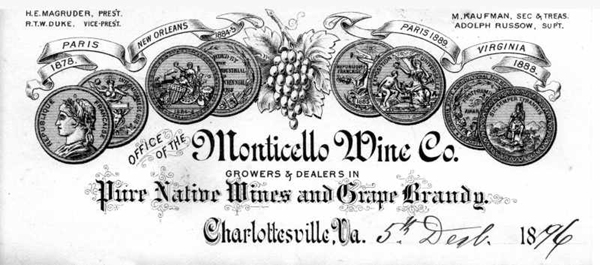
ABOVE: An 1896 logo label for the Monticello Wine Company
(Source: Albemarle Charlottesville Historical Society).
Although I am far from a connoisseur, I do enjoy my cocktail hour and on occasion, a good glass of wine. I prefer white over red, but am open to suggestions. My parents are wine enthusiasts and they have gifted me with a lovely bottle on occasion from their various taste-tours. Every two years I spend a wonderful weekend at Gray Ghost Vineyards for their Civil War Authors Day and this year I will be doing both a signing and vignette on Saturday, November 13, 2010 from 11:00 am to 5:00 pm. In addition to spending time with some great authors like Clint Johnson, I also get complimentary meals and a commemorative “and bottomless” glass.
While studying early American culture, it is not surprising to find that wine is an everyday mention. Clearly colonial society mirrored their native land’s passion for the beverage. Wine was essentially the ‘bottled water of the day’ and everyone drank it regardless of class or station. Thomas Jefferson, a man of many refined tastes, presented his own personal philosophies on determining wine types in a letter penned to Stephen Cathalan on May 26, 1819. He wrote:
“I will explain to you the terms by which we characterise different qualities of wines. They are 1. sweet wines, such as Frontignan & Lunel of France, Pacharetti doux of Spain, Calcavallo of Portugal, le vin du Cap &c. 2. Acid wines, such as the Vins de Graves, du Rhin, de Hocheim &c. 3. dry wines, having not the least either of sweetness or of acidity in them, as Madere sec, Pacharetti sec, vin d’Oporto, &c. and the Ledanon which I call a dry wine also. 4,. silky wines, which are in truth a compound in their taste of the dry wine dashed with a little sweetness, barely sensible to the palate: the silky Madeira which we sometimes get here, is made so by putting a small portion of Malmsey into the dry Madeira. There is another quality of wine which we call rough or astringent, and you also, I believe, call it astringent, which is often found in both the dry & silky wines. There is something of this quality for example in the Ledanon, and a great deal of it in the vin d’Oporto, which is not only dry, but astringent approaching almost to bitterness. Our vocabulary of wines being thus explained, I will observe that the wine of Nice sent me by Mr. Spreafico in 1816. was silky and a little astringent and was the most delicious wine I ever tasted, and the most esteemed here generally. That of 1817. was entirely dry, moderately astringent and a very good wine; about on a footing with Ledanon. That of 1818. last received, has it’s usual astringency indeed, but is a little acid, so much so as to destroy it’s usual good flavor. Had it come in the summer I should have suspected it’s having acquired that acidity by fretting in the hold of the ship, or in our hot warehouses on a summer passage, but it was shipped at Marseilles in October, the true time for shipping delicate wines for this country. I will now say why I go into these details with you. In the first place you are not to conclude that I am become a buveur. My measure is a perfectly sober one of 3. or 4. glasses at dinner, & not a drop at any other time. But as to these 3. or 4. glasses Je suis bien friand. I go however into these details because in the art, by mixing genuine wines, of producing any flavor desired, which Mr. Bergasse possesses so perfectly, I think it probable he has prepared wines of this character also; that is to say of a compound flavor of the rough, dry, and sweet, or rather of the rough and silky; or if he has not, I am sure he can. The Ledanon, for example, which is dry and astringent, with a proper proportion of wine which is sweet and astringent, would resemble the wine of Bellet sent me in 1816. by Mr. Spreafico. If he has any wines of this quality, I would thank you to add samples of 2. or 3. bottles of each of those he thinks approaches this description nearest. . . . I have labored long and hard to procure the reduction of duties on the lighter wines, which is now effected to a certain degree. I have labored hard also in persuading others to use those wines. Habit yields with difficulty. Perhaps the late diminution of duties may have a good effect. I have added to my list of wines this year 50. bottles of vin muscat blanc de Lunel. I should much prefer a wine which should be sweet and astringent, but I know of none. If you know of any, not too high priced I would thank you to substitute it instead of the Lunel.”
Mmm, OK……Thomas Jefferson was beyond brilliant and is obviously one of my favorite subjects, but in reading the above quote all I have to say is “WHAT?” No wonder we plain folks find wine discussions intimidating. It’s a drink for God’s sake. I shouldn’t need a degree in chemistry to pick one!
Now to be fair, Jefferson had a passion for wine (on two continents). Historian John Hailman wrote a book on the subject titled Thomas Jefferson on Wine. In it he depicts a man who had a superior knowledge of wine quality and production. The book concludes with an overview of the current restoration of the vineyards at Monticello and the new Monticello Wine Trail and its numerous world-class Virginia wineries. This reinforces the notion that wine really mattered to Monticello’s master and was his drink of choice.
In a letter to M. de Neuville in 1818 Jefferson did express a penchant for responsible drinking. He wrote, “I rejoice, as a moralist, at the prospect of a reduction of the duties of wine, by our national legislature….No nation is drunken where wine is cheap; and none sober, where the dearness of wine substitutes ardent spirits as the common beverage…”
Most people aren’t aware that one of the most expensive wines ever bought was the 1787 Chateau Lafite which was sold at Christie’s London in December, 1985 for £105,000 (at that time equivalent of US $156,000). This bottle is believed to be from the cellar of Thomas Jefferson as it had the “Th.J” initials etched into the glass. It became known as “The Billionaire’s Vinegar.” Today you can purchase a variety of reasonably-priced wines at Monticello that are produced from the same soil that their owner toiled.
All that said, Mr. Jefferson’s remarks echo the language of superiority and elitist mentality that exists in wine culture today. Many people, me included, have no clue of what constitutes a good wine. Therefore we don’t visit wineries because we are embarrassed of what to say. My cousin, a very successful attorney, collects rare wines and looks at them like an investment. I can’t even determine what to serve with pasta. Rum and Coke is my drink of choice because it has two parts. You can’t screw that up.
Fortunately, a childhood friend of mine who is a budding wine aficionado (claiming to be a novice) recently launched a wonderful blog titled Wine Wired: Resource for the every day wine lover. His name is Dennis Fraley and his vision for the language of wine enjoyment is both refreshing and frankly, much needed. Wine Wired features practical descriptions of wines, info on grapes and vineyards, an excellent section on pairing wine with food, and reader comments that give the site a real sense of community.
According to the About Us, Dennis explains how he felt the need to make a site that catered to everyone.
“The more I talked to people and the more I researched, I found that this whole world of wine was complicated and pretentious. What a shame to have something so amazing and keep it “hidden” and “exclusive” with special vocabulary and complicated themes. Actually, the first time I went to a true wine event with a tasting and discussion forums, I felt like someone forgot to show me the secret handshake. This site was created to do a number of things. It allows an outlet for this wine lover to write about experiences and knowledge gained in the world of wine. This site is also designed to instill in fellow wine drinkers that wine should be fun and simple, not snobby or exclusive. Wine is for everyone.”
Bravo my friend. Maybe now I can understand what the hell my friends are talking about and find something to pair with my wife’s outstanding chicken. I toast you.

Thursday, 13 May 2010
THE Announcement
As promised...today it is with great anticipation that I can finally announce some of the details about my next book project. This will be my 7th title, and easily the most ambitious, challenging, and scholarly to date. It will also require the most research and will likely not see shelves until 2012 (at the earliest). I have made several contacts recently which have directed me to some tremendous primary sources and archived reference that has yet to see the light of day. As a result, a rarely discussed aspect of a very famous life can now be shared.
The working title is Faith, Freedom, and Fallacy: Thomas Jefferson and the Virginia Statute of Religious Freedom. This book will present: Thomas Jefferson’s time at Fredericksburg in 1777, his meeting there at Weedon’s Tavern, in which he agreed to author the Virginia Statute of Religious Freedom, the story surrounding the writing of it, why Jefferson took so much pride in its completion, and how the results are debated and commemorated to this day.
This subject has not been examined definitively in any single study –at least from the angle at which I am pursuing it. In 1998, Cambridge Studies in Religion and American Public Life Series included a book titled The Virginia Statute for Religious Freedom: Its Evolution and Consequences in American History, but as this book looks at the statute from more of a political and sociological perspective, my study will (hopefully) be more intimate and include unpublished material on Jefferson’s time here in Fredericksburg.
Yes, there is a tentative publisher, although I have not signed a formal agreement yet. There is some discussion going on over the length of the manuscript. I am shooting for a longer piece than any of my previous books.
I will be working with sources from the Thomas Jefferson Foundation at Monticello and Central Rappahannock Regional Library, as well as some private materials from personal collections. I am waiting until I give my address on Jackson’s Valley Campaign at Lexington in June, and the release of our documentary on Richard Kirkland at the end of that month before directing all of my energies into this manuscript.
I have begun the process of acquiring data and can’t wait to see where this journey goes. I stated back in 2008 that my next goal was to pen something significant on Thomas Jefferson. Since then I have read four outstanding books on the man all of which I could never top. I just needed to find an original topic that would allow me to present something meaningful and interesting. I now have my subject and my sources. Stay tuned.

Newer | Latest | Older
 The good folks at Patriots of the American Revolution were kind enough to send me a sneak peek at my Mary Ball Washington feature that is running in the upcoming July/August issue. They had to cut some to fit, but it still turned out pretty good. I will post the entire copy and a PDF of the printed article once it hits the store shelves. I absolutely love writing for this magazine as they seem to bring out my best work. Be sure to grab a copy.
The good folks at Patriots of the American Revolution were kind enough to send me a sneak peek at my Mary Ball Washington feature that is running in the upcoming July/August issue. They had to cut some to fit, but it still turned out pretty good. I will post the entire copy and a PDF of the printed article once it hits the store shelves. I absolutely love writing for this magazine as they seem to bring out my best work. Be sure to grab a copy.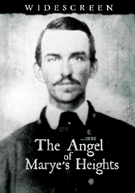
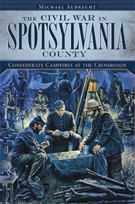
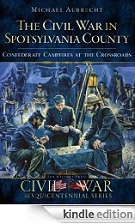

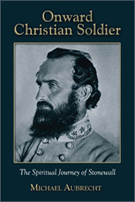

 Yesterday I received an email from Ms. Anna Berkes, who is the research librarian at
Yesterday I received an email from Ms. Anna Berkes, who is the research librarian at  Honoring a Medal of Honor Winner
Honoring a Medal of Honor Winner
